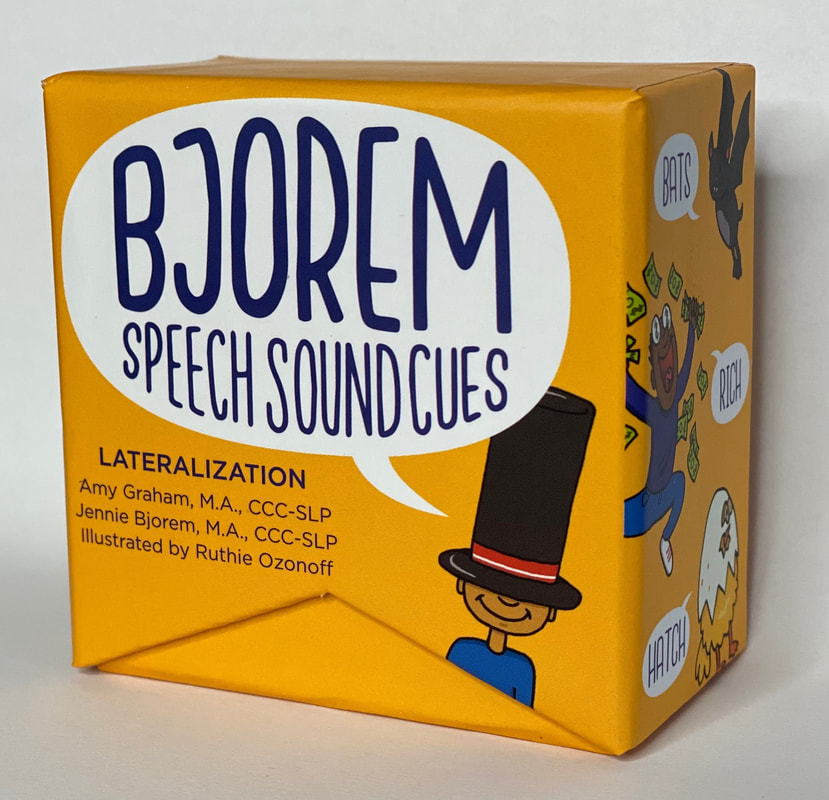|
Nothing strikes more fear in the heart of an SLP than those two little words... lateral lisp. To most parents it seems like an easy fix. It's just a sound or two that their child has trouble with... a few speech therapy sessions and boom, it should be fixed, right? Nope! Not that simple. Now if you're NOT a speech language pathologist, let me first define some terms. Primarily speaking, there are frontal lisps and there are lateral lisps. A frontal lisp occurs when the tongue either protrudes between, or touches, the front teeth and the sound produced is more like a /th/ sound than a /s/ or /z/. Many children go through a perfectly normal phase of producing a frontal lisp. Most will outgrow this and will be able to produce a correct /s/ sound by around kindergarten. Children who continue with a lisp past this age typically require speech therapy to correct it. A lateral lisp occurs when the air escapes over the sides of the tongue and into the cheeks.... this can occur on several sounds, /s/, /z/, /sh/, /ch/ /zh/, and /dj/. Parents of children with lateral lisps often describe their child's speech as sounding "mushy" or "slushy". These types of lisps are NOT developmental. Children with lateral lisps do not typically outgrow it and will require speech therapy to correct. Now speaking to my SLP colleagues.... if you have a child with a lateral lisp I'm assuming you've done a thorough oral motor/mechanism exam to determine if the child has any structural or functional issues. If not... do it! There are often myofunctional issues with these kids and those should be addressed (that's a post for another day). Let's talk about speech therapy for a lateral lisp.... The first thing we have to do is elicit the correct production of the target sound, whether /s/, /sh/, or /ch/ (I always start by targeting voiceless phonemes). Essentially, these kids have to learn to anchor the lateral borders of their tongue to the interior margins of their molars to prevent air from escaping laterally. There are plenty of techniques out there to help cue correct tongue placement, such as the butterfly technique, using straws, and fantastic resources from Pam Marshalla. But, I prefer what I call a phonetic approximation approach. I start by eliciting /s/ from the /t/ sound. It looks something like this...
BUT THAT'S NOT THE SECRET! If your little clients are anything like mine they quickly figure out that I'm trying to get them to say /s/! Ugh... which means they automatically go right back to that lateral airflow when they move to the word level. Oh, the frustration! So, here's my "secret" (drum roll please)... Tell the child you're NOT actually going to work on the /s/ sound! That's right.... you're done with /s/ and aren't even going to talk about it anymore! You are going to create a completely new sound... the "flat tire" sound! As we hold out that /t/ sound in step 2, it actually sounds like a tire losing air. It's the idea behind my new deck of speech sound cues from Bjorem Speech Publications created specifically for children who lateralize. The reason these new picture cues work so well is because you have a visual representation of their "new sound". Often when kids start adding a newly learned non-lateralized sound into different positions of words they begin to realize we're really working on /s/ and go right back to lateralizing again. But these cards help me remind them... NO /s/ sounds! We're only using the "flat tire" sound now. Then we start "removing" the /s/ sound from words and replacing it with that "flat tire" sound. This mental shift has been the key to my clients creating a new motor plan for correct production of /s/. I'm telling you, it's literally that simple. Need more information about this technique? There is much more detailed information included on the insert inside the Bjorem Speech Publications deck for Lateralization. Plus this deck also includes "new sound" cues and target words for each sound that kids lateralize.... including /z/, /sh/, /ch/, and /dj/! And don't forget to follow me on Instagram to see LOTS of real life therapy videos showing how I use this technique! ***A quick word about carryover... Don't forget to use those principles of motor learning to promote generalization of these skills. Working through a hierarchy of constant to variable positions in words/phrases, blocked to randomized practice, and simple to complex tasks will ensure your kids with articulation deficits won't be in years of speech therapy without significant progress.***
58 Comments
|
|





 RSS Feed
RSS Feed
